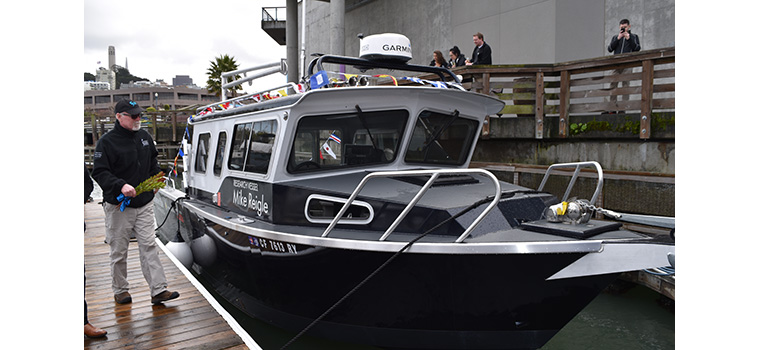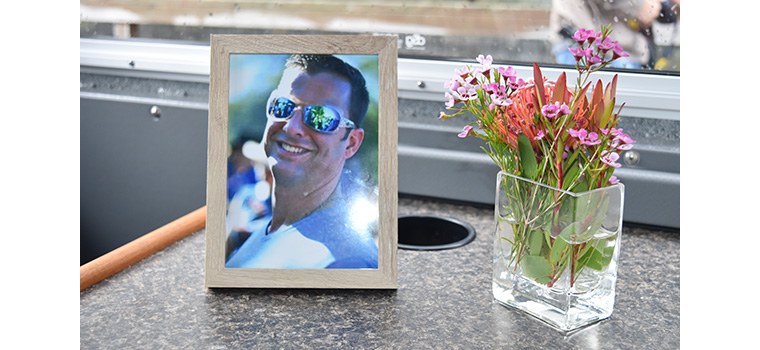Aquarium of the Bay launched its new research vessel, the RV Mike Reigle, on March 15.

The new Aquarium of the Bay vessel (above) is named after Mike Reigle (below), who wanted to dedicate his life to ocean conservation. Photo by Joel Williams
BY NORA WEBER
Published: April, 2018
Aquarium of the Bay launched its new research vessel, the RV Mike Reigle, on March 15. The new vessel replaced the aquarium’s aging research ship and offers new possibilities for the aquarium to support critical marine science in the Bay Area and beyond.
The vessel is a gift honoring a man who loved the ocean and wanted to dedicate his life to ocean conservation. Mike Reigle was an accomplished diver and dive instructor who spent much time exploring oceans in different parts of the world. Closer to home, he planned to be a volunteer diver at the Aquarium of the Bay.
Reigle died in 2015, and his family and friends decided that the best way to continue Riegle’s work was through a legacy project. It all began with a conversation between Orr Orenstein, a close friend of Riegle’s and a volunteer diver at the aquarium, and Mike McGill, Aquarium of the Bay’s collections coordinator. Orr was grieving the loss of his friend and McGill was discussing the impending loss of the aquarium’s previous research vessel.
Soon after, Orr met Riegle’s family and they discussed the idea of a common-sense mission that combined Riegle’s passion for oceanic causes with the organization he was on the cusp of joining.
Funds were raised in Reigle’s name to purchase the research vessel and retrofit it so that the Aquarium of the Bay could conduct in-depth studies on Bay Area native marine life. Based on experience with the previous vessel, the aquarium decided to go with a lighter hull material for fuel economy and toughness. Furthermore, the design of the new vessel allows the engines to be out of the water while the boat is docked, so corrosion to the propellers can be kept to a minimum.
Among the pieces of equipment added to the vessel are: a fish hold with water circulation to accommodate catch and release of marine mammals; a crane hoist to lower scientific equipment to the sea floor; a transom gate to accommodate divers; and a cabin large enough to host visiting scientists. The work deck has ample space for examining wildlife as well as elbow room for visiting scientists. The cabin space—with its offset aisle, head and worktable—affords a quiet place to get out of the elements and transit rough waters in relative comfort.
Depending on funding, the range of possible research includes: genetic sampling on sevengill sharks in collaboration with Seattle Aquarium to determine geographic distribution of genealogic lineages; leopard shark blood sampling in the south San Francisco Bay for a baseline knowledge study as it pertains to die-offs and storm water runoff; collaborating with local universities to determine recovery rates of sea stars affected by sea star wasting syndrome; and to help monitor declines in Bay eel grass beds, which are an important ecosystem to help off-set ocean acidification. The needs are many, so the challenge will be to identify funding to pursue critical research.
For more information, go to bayecotarium.org.
Nora Weber is the Director of Marketing and Communications for Bay.org/Bay Ecotarium, a trusted not-for-profit advocacy organization with the mission to protect, restore, and inspire water conservation from the Sierra to the sea. Aquarium of the Bay is one of six institutions under the banner of Bay Ecotarium.

Photo by Joel Williams

